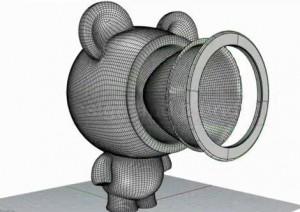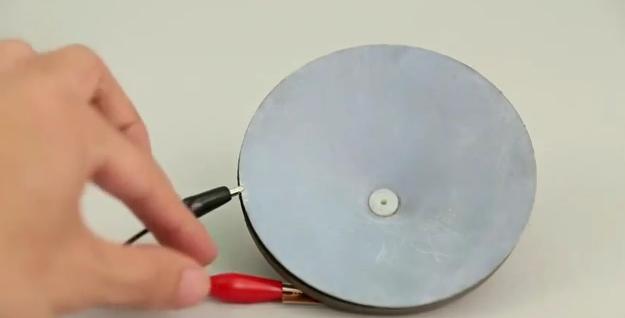We have seen a few iterations of 3D printed speakers in the last year or so, but nothing compares to the technology being developed by scientists at Disney Research, in Pittsburgh, Pa. They have found a way to 3D print  electrostatic speakers, capable of being manufactured in virtually any shape desired.
electrostatic speakers, capable of being manufactured in virtually any shape desired.
The researchers, Yoshio Ishiguro and Ivan Poupyrev, formerly of Disney Research, Pittsburgh, will be presenting their work at the Conference on Human Factors in Computer Systems, in Toronto tomorrow. Unlike conventional electromagnetic speakers which require moving parts, the electrostatic speakers are based on technology which is almost 75 years old. These speakers require no moving parts within their setup, and can function in a variety of unique applications.
In an electrostatic speaker, the sound is produced by the force of exertion on a membrane, which has been suspended in an electrostatic field. These speakers are general used for high pitched sound, but lack in their ability to produce a booming bass. Therefore, such speakers are great for playing sounds of birds chirping, human voices, and other squeaky noises. This would make them ideal for children’s toys, especially since they can be manufactured via 3D printers to fit any toy shape desired. The speakers are also able to produce ultrasonic sound, which are sounds that can not be heard by the human ear. Such sounds could be used in a way which allows toys and games to track each other for a variety of different applications.
“What’s more, it can generate sound across the entire face of the speaker,” Ishiguro stated.
Because of this, the sound can be expelled from all sides of the speaker, unlike that of a traditional electromagnetic speaker, which can only direct sound in one direction via a cone.
These particular speakers were developed with a combination of 3D printing as well as traditional manufacturing methods. Having said this, the researchers believe that within 5 to 10 years, the entire speaker will be able to be 3D printed in any shape, and integrated in virtually any object, all in one piece. It will all depend on how quickly multimaterial 3D printers come to market, capable of printing out electrical circuits and electrodes. Just last week a company called Rabbit Proto announced an open source 3D printing device capable to doing just this to a lesser extent. Discuss the 3D printing of electrostatic speakers at 3DPB.com. Check out the video below provided by Disney Research, for further information on these speakers:
Subscribe to Our Email Newsletter
Stay up-to-date on all the latest news from the 3D printing industry and receive information and offers from third party vendors.
You May Also Like
Gorilla Sports GE’s First 3D Printed Titanium Cast
How do you help a gorilla with a broken arm? Sounds like the start of a bad joke a zookeeper might tell, but it’s an actual dilemma recently faced by...
Nylon 3D Printed Parts Made More Functional with Coatings & Colors
Parts 3D printed from polyamide (PA, Nylon) 12 using powder bed fusion (PBF) are a mainstay in the additive manufacturing (AM) industry. While post-finishing processes have improved the porosity of...
$25M to Back Sintavia’s Largest Expansion of Metal 3D Printing Capacity Since 2019
Sintavia, the digital manufacturing company specializing in mission-critical parts for strategic sectors, announced a $25 million investment to increase its production capacity, the largest expansion to its operations since 2019....
Velo3D Initiates Public Offering in a Bid to Strengthen Financial Foundations and Drive Future Growth
Velo3D (NYSE: VLD) has been among a number of publicly traded 3D printing firms that have attempted to weather the current macroeconomic climate. After posting a challenging financial report for 2023,...
































